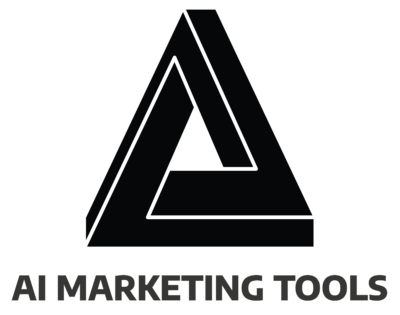
Marketing strategies have changed a lot in recent years, leading many businesses to wonder: Are AI marketing tools better than traditional methods? This article will compare the effectiveness of AI-driven solutions and conventional marketing practices. Readers will learn about the advantages of both approaches and discover top AI marketing software platforms. By the end, businesses will better understand which methods can better meet their marketing needs and improve their overall strategies.
Key Takeaways
- AI marketing tools enhance user engagement through data analysis and automation.
- Traditional marketing methods rely on established techniques but lack agility in adapting to changes.
- Personalization in marketing increases customer engagement and satisfaction significantly.
- Cost efficiency improves with AI tools, reducing long-term expenses for businesses.
- Hybrid approaches combine the strengths of both AI-driven solutions and traditional techniques for better results.
Defining AI Marketing Tools and Traditional Methods

AI marketing tools utilize advanced algorithms and data analysis for tasks like conversion rate optimization and marketing automation, enhancing user engagement. In contrast, traditional marketing methods rely on established techniques such as print advertising and word-of-mouth. Understanding these approaches and their key differences provides valuable insights into selecting the right methodology for effective SEO blog posts and overall marketing success.
Key Differences Between AI Tools and Traditional Approaches
The key differences between AI marketing tools and traditional methods lie in their approach to engaging customers and optimizing marketing strategies. AI tools utilize web analytics to automate processes, allowing marketers to analyze data in real-time and enhance customer satisfaction through targeted campaigns. In contrast, traditional marketing often relies on established techniques, such as print and direct mail, which may struggle to capture attention as effectively and cannot adapt quickly to market changes.
Evaluating the Effectiveness of AI Marketing Tools

AI marketing tools provide significant advantages through instant data analysis and insights, enabling marketers to make informed decisions quickly. By utilizing machine learning, these tools personalize experiences while offering cost-effectiveness over time. Additionally, integration with systems like Zapier enhances workflow, creating a seamless operation. This foundational understanding sets the stage for exploring each of these crucial aspects in detail.
Instant Data Analysis and Insights
Instant data analysis and insights are key strengths of AI marketing tools, enabling businesses to quickly understand audience behavior and adjust marketing campaigns accordingly. For example, platforms like Brandwatch utilize natural language processing to analyze messages across social media, providing brands with valuable feedback in real-time. This capability allows marketers to enhance newsletter content and optimize keyword density for improved engagement, making their strategies more effective than traditional methods that often lack such immediacy.
Personalization Through Machine Learning
Personalization through machine learning is crucial in enhancing user experience within marketing strategies. By leveraging social media tools and content marketing tools, businesses can tailor their messaging to align with individual customer preferences. For instance, statistics from market research indicate that personalized campaigns can boost engagement rates significantly, showcasing the effectiveness of AI-driven solutions compared to traditional methods.
Cost Effectiveness Over Time
Cost-effectiveness over time is a significant advantage of AI marketing tools for marketing teams. These tools reduce long-term risk by minimizing the need for extensive onboarding and manual efforts, allocating resources toward more strategic initiatives. For example, AI-driven platforms can automate graphics creation and analyze campaign performance, ultimately leading to a more efficient budget allocation while enhancing overall marketing effectiveness.
Integration With Existing Systems
Integration with existing systems is a crucial aspect of AI marketing tools, as it enhances usability and streamlines marketing efforts. Businesses benefit from seamless connectivity between their databases and email marketing tools, allowing for efficient data management and better campaign execution. For example, when transcription services are integrated into marketing platforms, they facilitate the conversion of valuable customer interactions into actionable insights, improving overall engagement.
- Importance of integrating AI tools with existing databases.
- Enhanced usability through connections with email marketing tools.
- Benefits of integrating transcription services for actionable insights.
Key Advantages of Traditional Marketing Methods

Traditional marketing methods offer several key advantages. Established brand trust and recognition arise from consistent messaging, which is vital for building customer loyalty. These methods often provide simplicity and accessibility for small businesses, making it easier to engage with audiences. Additionally, the human touch in customer engagement fosters meaningful connections, allowing brands to cut through the noise of digital communication. Each aspect enhances research efforts, media monitoring, ideation, and session replay activities, ensuring that marketing strategies remain relevant and effective.
Established Brand Trust and Recognition
Established brand trust and recognition are significant advantages of traditional marketing methods, providing a solid foundation for lasting customer relationships. Businesses that utilize email marketing and maintain consistent messaging often create positive customer experiences, fostering loyalty over time. Additionally, automation tools can enhance customer interactions while social media content reinforces brand familiarity, making it essential for companies to blend these aspects effectively in their marketing strategies.
- Consistent messaging builds brand trust.
- Email marketing enhances customer experience.
- Automation tools improve customer interactions.
- Social media content reinforces brand recognition.
Simplicity and Accessibility for Small Businesses
Simplicity and accessibility are significant advantages of traditional marketing methods, especially for small businesses. These methods often require minimal technical expertise, making them straightforward to implement without the steep learning curve associated with advanced AI marketing tools. For example, utilizing a virtual assistant can ease the burden of basic marketing tasks, allowing small business owners to focus on building relationships and visibility within their communities rather than grappling with complex algorithms or specialized platforms.
- Simplicity allows easy implementation for small businesses.
- Minimal technical expertise is required, reducing the learning curve.
- Virtual assistants can help manage traditional marketing tasks.
- Enhanced visibility within local communities fosters customer relationships.
Human Touch in Customer Engagement
The human touch in customer engagement is a core strength of traditional marketing methods. By utilizing storytelling and direct communication, brands create meaningful connections that resonate with their audience. For example, a local business can foster relationships through personalized interactions, which automated AI marketing tools can sometimes overlook. This approach builds trust and provides valuable feedback, enabling businesses to respond quickly to customer needs and preferences, ultimately improving their overall marketing effectiveness.
A Comparative Analysis of Performance Metrics

This section evaluates key performance metrics associated with AI marketing tools and traditional methods. It discusses conversion rates, highlighting how user interface and intelligence contribute to conversion success. Customer retention strategies will be explored, showcasing how each approach leverages customer data. Finally, a comparison of return on investment will reveal the operational efficiency of both methods, offering insights into their effectiveness.
Conversion Rates for AI Tools vs Traditional Methods
Understanding the differences in conversion rates between AI marketing tools and traditional methods is essential for businesses aiming to optimize their marketing strategies. AI tools often lead to higher conversion rates by leveraging advanced data analysis, allowing marketers to document user behavior and create targeted campaigns tailored to specific personas. This scalability enhances the overall effectiveness of marketing efforts and enables brands to refine their approaches based on immediate insights, leading to more successful engagement outcomes.
Customer Retention Strategies
When evaluating customer retention strategies, AI marketing tools often outperform traditional methods by utilizing advanced data analytics and machine learning. These tools allow businesses to tailor their copy and web design based on user behavior, fostering stronger customer relationships. By continuously refining their campaigns through feedback loops and automation, companies can significantly boost productivity in their retention efforts, ensuring customers feel valued and engaged.
- AI tools provide tailored marketing insights through data analytics.
- Effective web design and impactful copy enhance user experience.
- Automation refines retention strategies and improves productivity.
- Continuous feedback loops strengthen customer relationships.
Return on Investment for Both Approaches
Return on investment (ROI) is crucial in determining the effectiveness of both AI marketing tools and traditional methods. AI tools often utilize predictive analytics to forecast outcomes and refine campaigns, resulting in a greater ROI due to their ability to effectively target specific audiences. In contrast, while valuable in fostering trust, traditional methods can struggle with uncertain returns, especially when relying on basic image editing and unclear analytics that may not fully capture user engagement levels.
- AI tools employ predictive analytics to enhance campaign efficiency.
- Higher ROI often results from targeted outreach and real-time data.
- Traditional methods can yield unpredictable returns on investment.
- Image editing in traditional marketing may not directly correlate with measurable success.
- Advanced analytics provide deeper insights for refined strategies.
Best AI Marketing Software Platforms

AI-powered marketing platforms like Jasper and HubSpot are revolutionizing digital marketing by streamlining content creation, campaign management, and audience engagement. These tools leverage machine learning and automation to optimize marketing strategies, helping businesses maintain a competitive edge. Users should consider integration capabilities, customer support, and scalability when selecting an AI marketing platform. Industry insights and user reviews provide valuable guidance, while staying informed about emerging AI trends ensures businesses maximize their marketing potential.
Overview of Top Platforms Like Jasper, HubSpot, and More
Leading AI marketing platforms such as Jasper and HubSpot are reshaping digital marketing by enhancing content generation, analytics, and automation. These tools enable businesses to refine their social media strategies, personalize customer interactions, and optimize ad targeting. AI-driven insights allow brands to engage audiences more effectively, automate repetitive tasks, and generate high-quality content that aligns with marketing goals. By leveraging these platforms, businesses can enhance efficiency, strengthen brand identity, and stay ahead in an increasingly data-driven market.
Features to Consider When Choosing a Platform
Choosing the right AI marketing software requires evaluating key features that impact overall performance and return on investment. Seamless integration with existing CRM and data management systems is crucial for enhancing workflow efficiency. Advanced automation, predictive analytics, and AI-generated content capabilities can significantly improve campaign performance. Additionally, features like audience segmentation and real-time insights empower brands to refine their strategies and deliver highly targeted marketing messages.
User Reviews and Industry Insights
User reviews and industry insights are essential in assessing AI marketing platforms, particularly when analyzing factors like automation accuracy, audience segmentation, and ease of use. Reviews highlight the effectiveness of AI-powered personalization and predictive analytics in driving engagement. Marketing professionals often emphasize the importance of AI-generated content quality and platform usability when selecting the right tool. By examining real user experiences and expert evaluations, businesses can make informed decisions about which AI marketing platform best aligns with their objectives.
Future Trends in AI Marketing Tools
AI marketing tools continue to evolve, shaping the future of digital marketing through enhanced automation, real-time analytics, and machine learning-driven strategies. Predictive AI will further refine customer engagement by offering deeper insights into user behavior and content performance. Advancements in AI-driven chatbots, hyper-personalization, and dynamic ad optimization will enable marketers to create more effective campaigns. As AI technology progresses, businesses that embrace these innovations will gain a competitive advantage, ensuring their marketing efforts remain agile and data-driven.
Conclusion
Understanding the differences between AI marketing tools and traditional methods is essential for businesses aiming to optimize their marketing strategies. AI tools offer real-time data analysis, personalization, and automation, resulting in higher engagement and improved ROI. In contrast, traditional methods build brand trust and facilitate meaningful customer relationships through direct communication. By leveraging the strengths of both approaches, marketers can enhance their campaigns and achieve greater overall success.

Comments